10 Signs Your Dog is Happy

As dog owners, we all strive to ensure our dogs are happy. Interpreting your dog’s body language can help you gauge their mood and wellbeing. However, since dogs cannot communicate with us in human language, it can be challenging to discern what they are truly feeling. Some dog breeds may have a naturally calm demeanor that may not always outwardly display signs of happiness, even though they may subtly convey their love for life.
While we can’t become fluent in “dog speak,” familiarising ourselves with common signs dog body language, observing their facial expressions, ear position, eye contact, posture, and vocalisations, can help us better understand our pets’ emotions.
It’s important to note that not all dogs will exhibit all these signs of happiness, and that’s perfectly normal. Just like humans, dogs have unique ways of expressing their emotions. Some may be laidback and not overtly display emotions, which doesn’t necessarily indicate whether they are happy or unhappy. It simply means we may need to put in a little extra effort to accurately interpret their feelings.
Here are 10 signs to look out for when you’re trying to figure out if your dog is genuinely happy:
1. Your Dog Has Soft Eyes
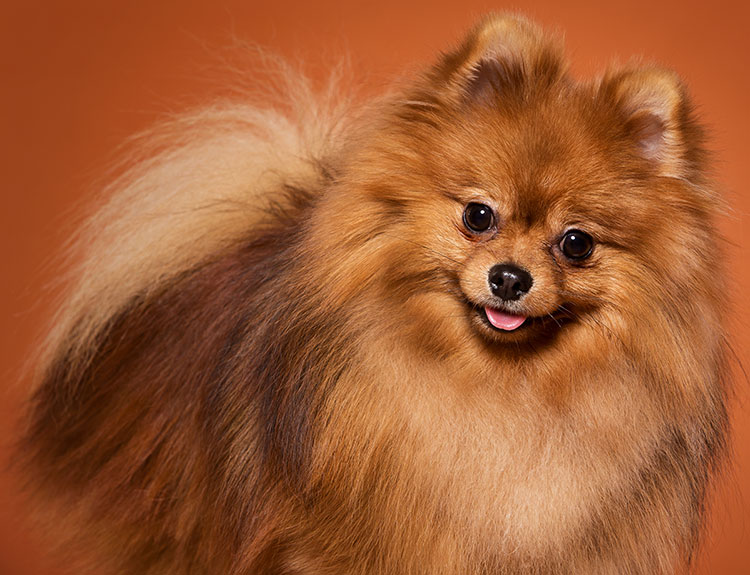
A dog’s gaze can reveal a lot about their emotions. When a dog is intensely focused, aggressive, or fearful, their eyes may have a “hard” gaze, with narrowed eyes fixed on one thing. However, when a dog is relaxed and content, their eyes will be soft, wide, and likely wander around the room.
Paying close attention to your dog’s eyes can provide valuable insights into their mood and emotions while interacting with them. So, keep an eye out for the soft gaze, as it can be a significant indicator of your furkid’s happiness and emotional state.
2. Your Dog Has Relaxed Ears
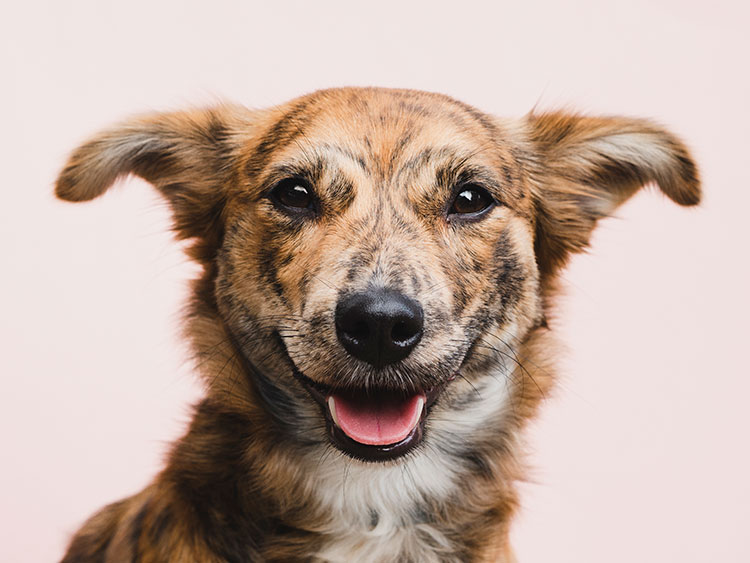
The position of a dog’s ears can provide clues about their emotions. When a dog is feeling fearful or aggressive, their ears will flatten against their head. On the other hand, pricked-up ears can indicate that a dog is attentively listening to something, whether it’s during play or when feeling anxious. For example, a dog playing with a squeaky toy may have their ears perked up, but it doesn’t necessarily mean they’re scared. Similarly, if a dog hears something loud outside, they may also prick their ears up in response.
When a dog’s ears are relaxed, it’s a sign of contentment and calmness.
However, it’s important to note that just because a dog’s ears may not be relaxed, it doesn’t mean they’re unhappy. Dogs can still be happy while playing and have their ears pricked up.
3. Your Dog Has a Relaxed Mouth
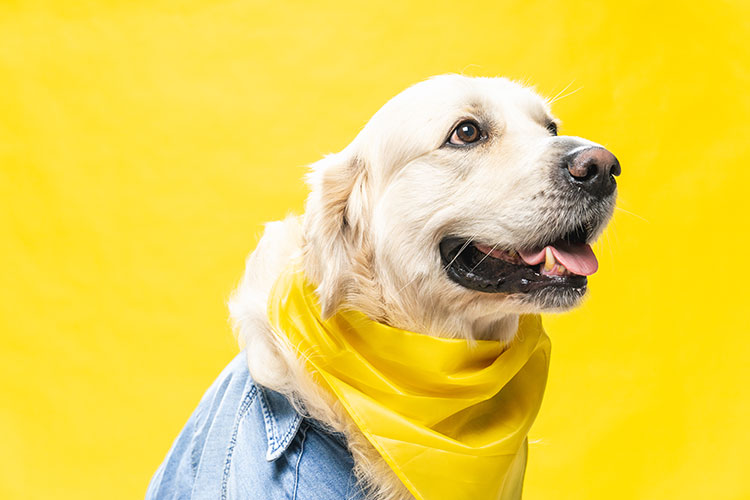
When a dog is scared or aggressive, their mouth become stiff, even if they’re not showing their teeth. On the other hand, happy dogs appear to smile, their mouths are open and the corners are turned up with some teeth visible, but not displayed in an aggressive way.
However, it’s important not to confuse a panting dog with one that has a relaxed mouth. Dogs pant for various reasons, such as being hot, anxious, or in pain. While panting is normal in many situations, if your dog is panting without an apparent reason, it may be time to consult your veterinarian for further evaluation.
4. Your Dog Has a Wagging Tail

While many people believe that a wagging tail is always a sign of a happy dog, it’s not always the case. A dog that is genuinely happy will typically have a relaxed body, and their tail wag may even make their entire body wag.
However, if a dog is wagging their tail while keeping their body stiff, it could be a sign of anxiety or alertness. This may happen when a dog is meeting a new dog, for example, where they may be uncertain or cautious about the situation despite the potential for fun.
5. Your Dog Has Good Behaviour
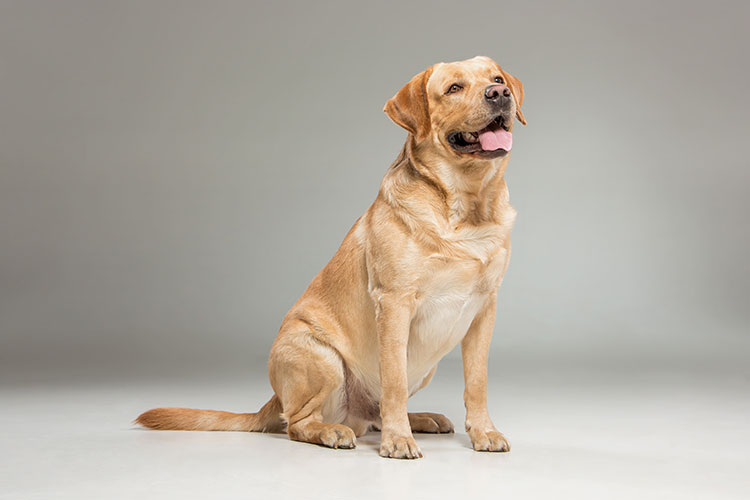
Dogs that engage in destructive behaviour are often bored, unwell, or lacking proper training. Even well-trained dogs can become destructive if their mental and physical exercise needs are not met. On the other hand, dogs that exhibit good behaviour and refrain from destructive behaviours are often content and happy.
Boredom is a common trigger for destructive behavior in dogs. When dogs are bored, they may resort to finding their own entertainment, which can result in destructive actions such as chewing furniture or walls. Happy dogs, on the other hand, have enough mental and physical stimulation in their daily routine, and therefore do not feel the need to engage in destructive behaviours.
If your dog is displaying undesirable behaviour, it may be a signal that they need more physical or mental exercise. Consider increasing their daily activity level, spending more time on training sessions, or providing puzzle toys to keep their minds engaged. Proper mental and physical stimulation can go a long way in promoting good behaviour in dogs and ensuring their overall well-being.
6. Your Dog Is Playful
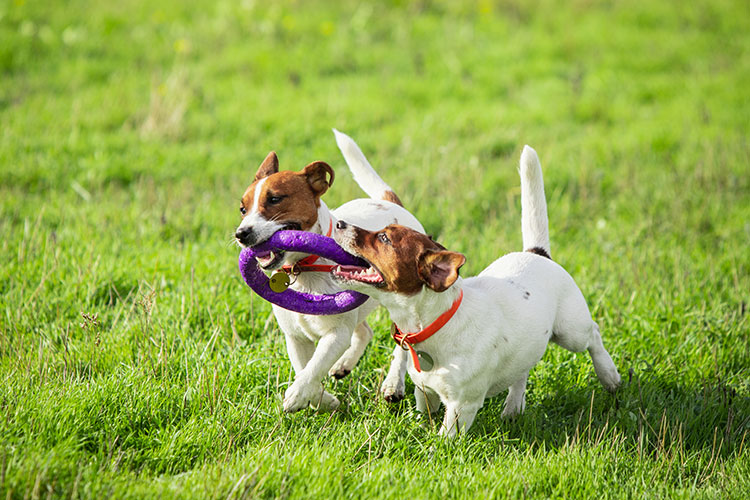
Playfulness is often a sign of a happy dog. Dogs that are relaxed and carefree tend to engage in play, showing their enjoyment and contentment. However, if a dog is worried or in pain, their playfulness may be reduced.
It’s important to keep in mind that not all dogs are naturally playful, and it doesn’t necessarily mean they are sad. Some dog breeds, like hound dogs, for example, are usually laid back and don’t engage in much energetic activity, but that doesn’t mean they are depressed or sad.
7. Your Dog Has a Good Appetite

Dogs that are nervous, anxious, or in pain may experience decreased appetite, while dogs that eat excessively may also be exhibiting signs of anxiety. Some dogs may even start hoarding food when they become nervous, leading to an increased appetite. However, it’s important to note that increased appetite can also be caused by certain illnesses, although this is less common compared to illnesses causing decreased appetite.
On the other hand, dogs with a normal, healthy appetite are generally not sick or feeling anxious. Monitoring changes in your dog’s appetite can serve as a crucial indicator that something may be amiss with their well-being. Being vigilant and observant of your dog’s eating habits can help you identify any potential health concerns and seek appropriate veterinary care in a timely manner.
8. Your Dog Sleeps Well

Dogs require a significant amount of sleep, often more than the average adult human. For instance, most adult dogs sleep for approximately 16 hours per day, while puppies and seniors may need even more sleep. If you notice that your dog is not sleeping as much as they should, it could be an indication that something is amiss. Just like humans, anxious dogs may struggle with sleep, especially if they are feeling fearful or anxious.
In addition to anxiety, certain illnesses can also disrupt your dog’s sleep patterns. It’s important to be mindful of your dog’s sleep routine and observe any changes in their sleep behavior. If your dog is experiencing difficulty sleeping or sleeping excessively, it may be a sign of an underlying health issue that requires attention.
9. Your Dog Does a Belly-Up

When a dog shows you their belly and sticks out their tongue, it’s often a surefire sign of pure happiness. This playful behavior, known as “belly up,” is a dog’s way of expressing joy and contentment. When a dog is relaxed and feels safe, they may roll over on their back, exposing their vulnerable belly, while happily wagging their tail and panting with their tongue out.
This endearing display shows that your dog is feeling happy and at ease in your presence. It’s a gesture of trust and affection, as your dog is willingly exposing their most sensitive area to you. Dogs instinctively show their bellies as a sign of submission and trust, and when combined with a wagging tail and a tongue hanging out, it’s a clear indication of their happiness and comfort.
So, the next time your furry companion rolls over with their belly up and their tongue out, take it as a heartwarming sign that they are feeling incredibly content and delighted in your company. Embrace this special moment and shower your dog with love and affection, knowing that they are truly happy in that moment.
10. Your Dog Does a Play Bow
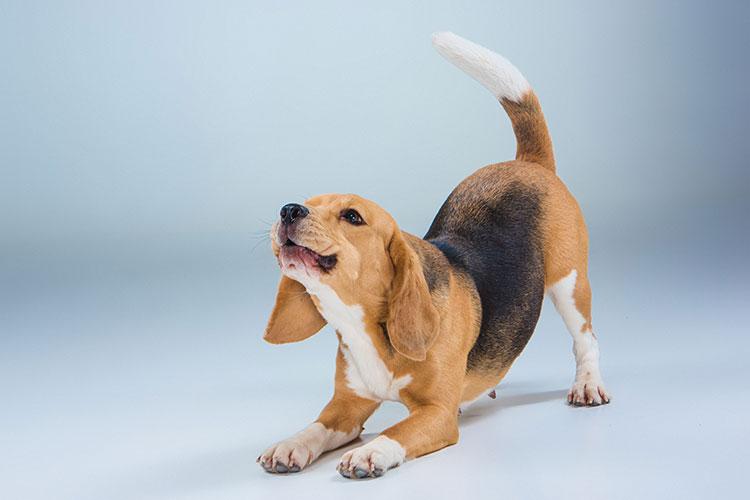
When a dog performs a play bow, it’s a clear signal that they are ready for some fun and games. During a play bow, a dog will lower their chest to the ground while keeping their rear end in the air, creating a distinctive “bow” shape with their body.
This playful posture is a universal canine invitation for play. It’s a way for your dog to communicate their playful intentions and eagerness to engage with you or other dogs. The play bow is often accompanied by wagging tails, wiggling bodies, and joyful facial expressions.
Need a ride with your pet? JoJo Pets is here for you! JoJo Pets, a Malaysian pet taxi service that provides safe and timely pet transportation to any local destination you have in mind. Let us know if you have any questions. Book a ride with us today!
JoJo Pet also offers cashless payment with their JoJo Wallet, including all major e-wallets, credit/debit card as well as online banking.
Download the JoJo Pets app today for exclusive news and offers at https://jojo-pets.com/
